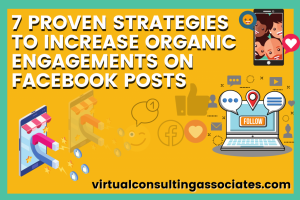When you see major brands like Nike, Facebook, Google and Tesla you’ll notice one main thing that differentiates them from other brands in their industry is their colors and logos. We recognized companies by the colors and logos, that’s because color psychology plays a monumental role in branding; colors influence our perception and make us feel a certain way, even if we don’t always realize it on a conscious level. Color psychologists advise choosing colors that appeal to your customer’s emotion and that are relatable to your brand. For instance, YouTube play button is red and white and McDonald’s arches are a happy yellow – it just makes sense.

Before you go ahead and start choosing any color for your brand and designing your logo, you need to understand what these colors mean. What industry do you find yourself in, what does your business stands for, where your customers located and what age group do you intend to serve, these are few questions that can help you in choosing your brand colors.
Banks like Chase, Citibank, Barclays and Bank of America all use blue as one of their dominant branding colors. Obviously it’s more than a coincidence that these money-related companies all chose blue for their brand identity. So what do they all know that you don’t?
The short answers is they know how to combine color theory with business. When building a brand—just like when building a house or furniture—you need to understand how to use all the tools at your disposal, and that’s just what we’re going to discuss today.
In this article, we’ll run through everything you need to know about branding colors, what they mean and what to consider when choosing colors for your logo.
Here’s a summary of brand color meanings and the effect that different branding colors can have on people:

Red — Red stands for passion, excitement and anger. It can signify importance and command attention.
Orange — Orange stands for playfulness, vitality and friendliness. It is invigorating and evokes energy.
Yellow — Yellow evokes happiness, youth and optimism, but can also seem attention-grabbing or affordable.
Green — Green evokes stability, prosperity, growth and a connection to nature.
Light Blue — A light shade of blue exudes tranquillity, trust, openness. It can also signify innocence.
Dark Blue — Dark blue stands for professionalism, security and formality. It is mature and trustworthy.
Purple — Purple can signify royalty, creativity and luxury.
Pink — Pink stands for femininity, youth and innocence. It ranges from modern to luxurious.
Brown — Brown creates a rugged, earthy, old-fashioned look or mood.
White — White evokes cleanliness, virtue, health or simplicity. It can range from affordable to high-end.
Gray — Gray stands for neutrality. It can look subdued, classic, serious, mysterious or mature.
Black — Black evokes a powerful, sophisticated, edgy, luxurious and modern feeling.
Keep in mind that the effect of your branding colors depends on the style and design they are used in, as well as the color combinations you choose. This is an abridged version, our connection to color goes lot deeper than this—for example, too much yellow can actually cause anxiety.
Now that we know what most of the popular colors mean, let’s see how we can combine each these colors and how it’ll affect our brand and business.
Follow these formulas to choose the best combination for your logo and brand color scheme.

1. Plan on choosing 3 colors
Your base, accent and a neutral. Brand color schemes can have between 1-4 colors depending on the type (see picture below), but even monochrome schemes will require some variation in hues for different purposes.
2. Choose your base
Of all your brand’s personality traits, which one is most important? Your base color should reflect not only your brand personality’s most dominant trait, but also appeal to the target audience you’re trying to reach. You’ll choose the remaining colors based on how well they match with this one.
3. Choose your accent
Your accent will be the color you use the most after your base color. This is a bit trickier than choosing your base color because there are more restrictions: aside from matching a brand personality trait, your accent color must also pair visually with your base color.
4. Choosing your neutral
Your neutral color will most likely be a background color, something chosen to avoid attention. Typically these are different hues of gray, but beige, whites and off-whites work, too. Black is also an option, but be careful; it tends to dominate any color scheme it’s a part of.

Throughout the process of choosing your branding colors, you have to keep in mind the end goal.
Now you know what colors to choose for your brand, logo and banners but before you go let me tell you why we chose the colors (#4FC3A3, #FBB040 and #000000) for our logo and brand designs.
Virtual Consulting Associates (VCA) is an online services provider specialized in helping business grow their online presence, increase customer base, increase sales/profit and create brand awareness through social media management, designing websites, online marketing, research and general graphic designs for all businesses. Since our business is based online and assisting business online, the color #4FC3A3 confirms our commitment to help business grow and prosper. Also the color #FBB040 confirms the happiness we promise to give our clients and their customers and #000000 as our neutral color means how we pride in solving problems with modern technology and practices.
I hope you can now boldly decide on the best colors and right combination for your brands and logos. By choosing the right color combination, you can help your brand leave a lasting impact that shapes a more powerful connection with your audience and bring growth to your business.



